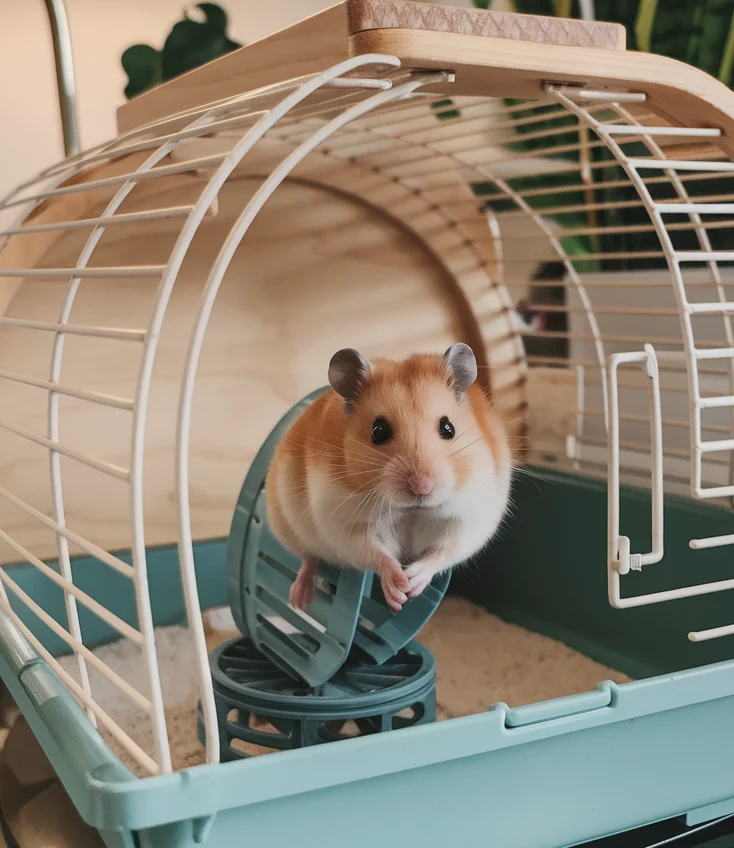Happy Hamsters: A Guide to Keeping Hamsters as Pets

Hamsters, with their tiny paws, twitching whiskers, and playful nature, are among the most popular small pets. These little furballs are easy to care for, making them ideal for first-time pet owners and families. However, like any pet, they require proper care and attention to thrive. Here’s everything you need to know about keeping hamsters as pets and ensuring they live happy, healthy lives in your care.
Why Hamsters Make Great Pets
- Low Maintenance
- Hamsters are relatively low-maintenance pets. They don’t require much space, and their daily care routine is simple, making them a perfect choice for those with busy schedules.
- Compact Size
- Their small size makes hamsters ideal for apartment living. They don’t take up much room, and their cages can easily fit into any living space.
- Fun and Playful
- Hamsters are playful creatures that love to explore, burrow, and interact with their environment. Watching them in action can be highly entertaining, especially when they run on their exercise wheel or dig through their bedding.
- Short Lifespan
- While it may seem like a downside, the short lifespan of hamsters (typically 2-3 years) can be ideal for those who want the experience of pet ownership without a long-term commitment.
Popular Hamster Breeds and Their Care
1. Syrian Hamsters
- Largest and Most Popular: Syrian hamsters, also known as golden hamsters, are the largest and most popular hamster species. They are easy to handle and have a calm temperament, making them great pets for children.
- Habitat: They require a spacious cage with plenty of room for exercise and exploration. Include a solid-bottom exercise wheel, tunnels, and a hideout.
- Diet: A balanced diet of commercial hamster pellets, fresh vegetables, and occasional fruits will keep them healthy. Fresh water should always be available.
2. Dwarf Hamsters
- Small and Social: Dwarf hamsters, including species like the Roborovski and Campbell’s dwarf hamsters, are smaller and more social than Syrians. They can be kept in pairs or groups, but they still need careful supervision to prevent fighting.
- Habitat: A tank or cage with horizontal bars to prevent escape is recommended. Provide plenty of hiding spots, as dwarf hamsters are shy and need places to retreat.
- Diet: Similar to Syrians, but with a focus on smaller portions. Avoid overfeeding, as dwarf hamsters are prone to obesity.
3. Chinese Hamsters
- Slender and Agile: Chinese hamsters are known for their long tails and slender bodies, making them more agile climbers. They are generally more timid and may require extra time to get used to handling.
- Habitat: A cage with ample climbing opportunities and plenty of floor space is ideal. They enjoy burrowing, so provide deep bedding.
- Diet: A mix of hamster pellets, seeds, and fresh vegetables is suitable. Like other hamsters, they require constant access to fresh water.
Setting Up a Hamster-Friendly Environment
- Cage and Bedding
- The cage should be spacious with solid floors. Wire cages with a plastic base or glass tanks work well. Provide a deep layer of bedding, such as paper-based or aspen shavings, for burrowing and nesting.
- Exercise and Enrichment
- Hamsters are active creatures, especially at night. A solid-bottom exercise wheel is essential. Additionally, provide tunnels, chew toys, and cardboard tubes to keep them entertained and prevent boredom.
- Temperature and Lighting
- Keep the cage in a quiet area away from direct sunlight and drafts. Hamsters thrive at room temperature, around 65-75°F (18-24°C). They do not require special lighting but benefit from a natural day-night cycle.
- Cleanliness
- Regular cleaning of the cage is crucial. Spot-clean soiled bedding daily and do a full cage clean once a week to prevent odors and ensure a healthy environment.
Daily Care and Maintenance
- Feeding Schedule
- Hamsters should be fed once a day, typically in the evening when they are most active. Ensure they have access to fresh water at all times, preferably in a water bottle to prevent spills.
- Handling and Socialization
- Start handling your hamster gently and gradually to build trust. Hamsters can be skittish, so be patient. They may nip if startled, so always approach them calmly and avoid waking them suddenly.
- Health Monitoring
- Regularly check your hamster for signs of good health, such as bright eyes, clean fur, and a steady appetite. Watch for signs of illness like lethargy, weight loss, or unusual droppings, and consult a vet if needed.
Fun Facts About Hamsters
- Cheek Pouches: Hamsters have expandable cheek pouches that they use to carry food back to their burrows. These pouches can hold up to half their body weight in food!
- Nocturnal Nature: Hamsters are nocturnal, meaning they are most active at night. This behavior is a survival instinct from the wild, where they would avoid daytime predators.
- Fast Breeders: Hamsters can reproduce quickly, with females able to have multiple litters a year. However, it’s advisable to keep males and females separate to prevent unintended breeding.
Conclusion
Hamsters are delightful pets that bring joy and companionship to their owners. With the right care, a suitable environment, and a little patience, these small creatures can thrive and become a beloved part of your household. Whether you choose a large, friendly Syrian or a tiny, active dwarf hamster, you’ll find that these little critters make wonderful pets.



